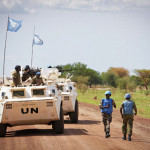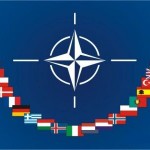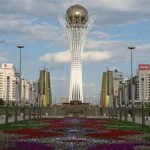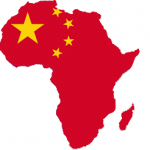“Civil War and Crisis in Côte d’Ivoire – An Analysis of the Steps Taken by the International Community to Prevent, Manage and Resolve the Conflict ” by Kapok Tree Diplomacy
Tag Archive for United Nations
PREVIEW – Civil War and Crisis in Côte d’Ivoire – An Analysis of the Steps Taken By the International Community To Prevent, Manage and Resolve the Conflict
(C) Kapok Tree Diplomacy. Oct 2010. All rights reserved. Jeff Dwiggins.
Essay consists of 11 pages, double-spaced + 26 references (3,293 words)
Table of Contents (TOC)
I. Introduction
A. Summary of the Sources and Causes of the Conflict
B. Background
II. Actions of the Main Actors
A. France
B. Burkina Faso
C. The United Nations (UN)
III. United Nations Operation in Côte d’Ivoire (UNOCI)
IV. UN Security Council (UNSC)
A. ECOWAS and the African Union (AU)
B. FN Zone Commanders
C. Independent Electoral Commission (CEI)
D. President Laurent Gbagbo and his party, the Front Populaire Ivoirian (FPI)
E. Prime Minister Guillaume Soro and the Forces Nouvelles (FN)
F. The World Bank (WB)
V. The Ouagadougou Political Accord (OPA)
A. Genesis of the OPA
B. Key Components
PREVIEW
Actions of the Main Actors
France. After a failed military coup on September 19, 2002, France quickly moved 700 troops into Côte d’Ivoire under a 1961 pact obligating it to defend its former colony from any external invasion (Kohler 31). But France also had 16,000 citizens and 210 subsidiaries of French companies (Kohler 31), in addition to $3.5 billion Euros in direct investment in industries like oil, gas, banking, pharmaceuticals and telecommunications to protect (Busch 52). Read more
Challenges to Keeping the Peace in International Law
(C) Kapok Tree Diplomacy. August 2010. All rights reserved. By Jeff Dwiggins
Introduction – FREE CONTENT
The need for a “fundamental institutional arrangement not only to address questions of war and peace and human rights but to develop legal norms in other areas, such as labor, health, and communications,” has enticed the vast majority of states to consent at some level to a growing and complex body of rules and norms designed to serve state interests by securing and furthering a peaceful, prosperous and stable society (Dunoff et. al. 16). Today these norms permeate the mission and operations of numerous international institutions like the United Nations, providing peaceful dispute resolution tools in such diverse areas as trade, military operations and human rights.
While most states desire to live in peace with one another and follow the fundamental norms of international law, a few states and some increasingly dangerous non-state actors like Al- Qaeda prefer to do whatever they want. In his Nobel Peace Prize acceptance speech, U.S. President Barack Obama added, “[the] old architecture is buckling under the weight of new threats … wars between nations have increasingly given way to wars within nations. The resurgence of ethnic or sectarian conflicts; the growth of secessionist movements, insurgencies, and failed states; have increasingly trapped civilians in unending chaos” (Obama 51).
This paper will examine what it means to “keep the peace” in an era of the globalization of world politics and unprecedented challenges and threats. The specific challenges to be addressed include nuclear proliferation, military conflict and terrorism, international trade and economic relations, diminishing natural resources, and humanitarian and human dignity issues. The paper will also examine whether existing international institutions and legal doctrines are likely to resolve the issue, and where are they likely to fall short?
The posts, views and opinions expressed in this post are completely my own and do not represent the views or opinions of the Department of Defense (DoD), the Department of the Navy (DON) or any of the Armed Forces.
Section One – Nuclear Proliferation
Nuclear weapons are able to do far more than disable enemy combatants. They can destroy entire cities and obliterate entire human populations with one powerful blast. The international community has developed two important treaties, The Treaty on the Non-Proliferation of Nuclear Weapons (NPT) and the Comprehensive Test Ban Treaty (CTBT), to limit proliferation of Weapons of Mass Destruction (WMD), encourage disarmament, and preserve peaceful usage of nuclear energy (Dunoff et. al. 532-533). Although these treaties have substantial ratifications, their effectiveness is severely limited by holdouts and compliance issues. Read more
International Law’s Expansion into Individual Affairs: A Tug of War over Tradition, Jurisdiction and Universal Human Rights
Introduction – (C) Kapok Tree Diplomacy, July 2010, All rights reserved. Jeff Dwiggins, author.
As international law extends beyond traditional state-to-state interactions into matters directly involving the rights and wrongs of individuals, its pervasive encroachment directly collides with domestic law on important issues of supremacy, customary norms, jurisdiction, human rights and sovereign immunity. Courts often struggle to navigate the chasm between the two realms of international and domestic law and produce cogent, universally accepted decisions that fall within uncontested limitations and clear jurisdictions.
This paper will explore the challenges, benefits and trade-offs of a non-traditional application of international law in cases involving individuals where the dynamics of tradition, jurisdiction and human rights interact in overlapping spheres of domestic and international law, producing a compelling tug of war between competing interests. I’ll begin by examining the issue of international and universal human rights.
The posts, views and opinions expressed on this site are completely my own and do not represent the views or opinions of the Department of Defense (DoD), the Department of the Navy (DON) or any of the Armed Forces.
Section One – International Human Rights v. The Interests of States
The Preamble of the United Nations (UN) Charter calls upon member states to “reaffirm faith in fundamental human rights, in the dignity and worth of the human person, in the equal rights of men and women and of nations large and small,” while Articles 55 encourages member states to promote “universal respect for, and observance of, human rights and fundamental freedoms for all without distinction as to race, sex, language, or religion” (“Preamble” and “Chapter IX”). A thorough reading of the Charter, however, doesn’t uncover any definition or mandate for human rights which has complicated a universal embrace of uniform standards for human rights. Read more





